Learn how to repair, replace, and install flat roofs with this comprehensive guide
Reading Time: 7 minutesOverview
This course will provide the knowledge and skills necessary to repair, replace, and install flat roofs. You will learn about the different types of flat roofs, their advantages and disadvantages, and how to choose suitable materials for your specific needs. In addition, you will explore various techniques for repairing and replacing flat roofs and best practices for installing new ones.
Introduction to Flat Roofs
Flat roofs are a popular roofing system for commercial and residential buildings. Unlike pitched roofs, which have a slope, flat roofs have a slight pitch to allow water to drain away from the building. Flat roofs are often used in urban areas with limited space, providing additional room for outdoor activities or equipment installation.
This module will discuss the different types of flat roofs, their advantages and disadvantages, and how to choose suitable materials for your specific needs.
Types of Flat Roofs
There are several flat roofs, each with unique characteristics and benefits. The most common types of flat roofs include
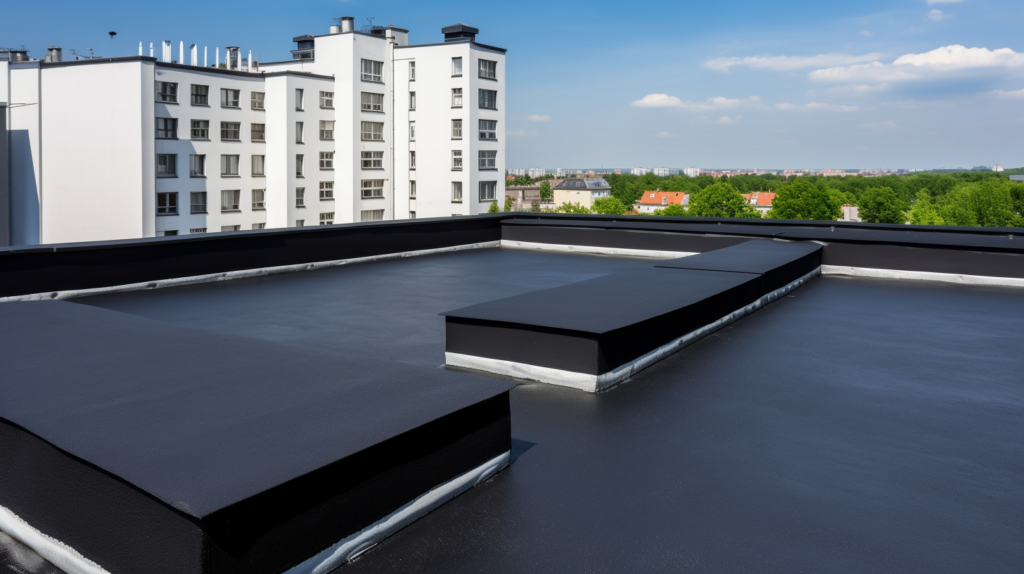
Built-Up Roofing (BUR)
Built-up roofing (BUR) is a traditional flat roof system used for over 100 years. BUR consists of multiple layers of bitumen and reinforcing fabrics, such as felt or fiberglass. The layers are then sealed with a top layer of gravel or mineral granules. BUR roofing is durable, fire-resistant, and can last up to 30 years with proper maintenance.
Modified Bitumen Roofing
Modified bitumen roofing is a newer flat roof system that combines BUR’s durability with rubber roofing’s flexibility. Modified bitumen roofing is made from asphalt and synthetic rubber modifiers applied to the roof in layers. This type of roofing is easy to install, cost-effective, and lasts up to 20 years.
Single-Ply Membrane Roofing
Single-ply membrane roofing is a popular choice for commercial flat roofs. It is made from a single layer of synthetic material, usually, PVC or TPO, heat-welded or chemically adhered to the roof surface. Single-ply roofing is lightweight, energy-efficient, and can last up to 25 years.
Spray Polyurethane Foam Roofing
Spray polyurethane foam (SPF) roofing is a unique type of flat roof system applied as a liquid and then expands to form a seamless, waterproof layer. SPF roofing is highly energy-efficient and can reduce heating and cooling costs by up to 30%. It also offers superior insulation and can last up to 50 years with proper maintenance.
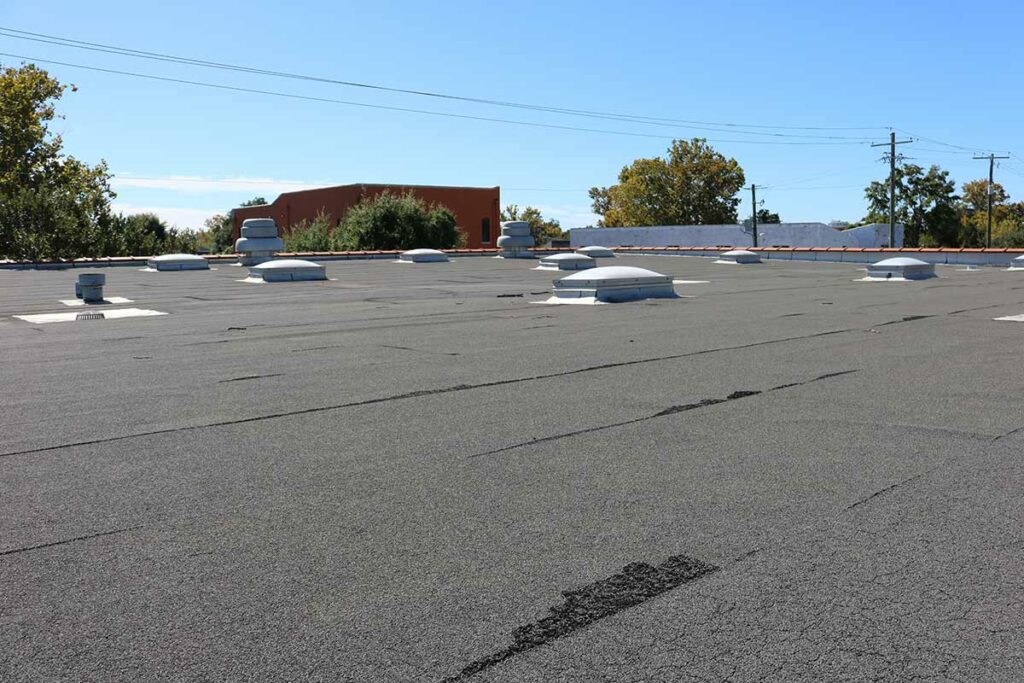
Choosing the Right Materials
Choosing suitable materials for your flat roof is crucial to its longevity and performance. Some factors to consider when selecting materials include:
- Weather conditions in your area
- Building codes and regulations
- Budget
- Energy efficiency requirements
- Maintenance needs
Working with a professional roofing contractor who can help you choose suitable materials for your specific needs and provide expert installation and maintenance services is essential.

In conclusion, flat roofs are an excellent choice for commercial and residential buildings. By understanding the different types of flat roofs and choosing suitable materials, you can ensure that your flat roof will last for many years while providing reliable protection for your property.
Conclusion – Introduction to Flat Roofs
Flat roofs are an excellent choice for commercial and residential buildings as they provide additional space and cost-effectiveness. Understanding the different types of flat roofs and choosing suitable materials is crucial to ensuring their longevity and performance.
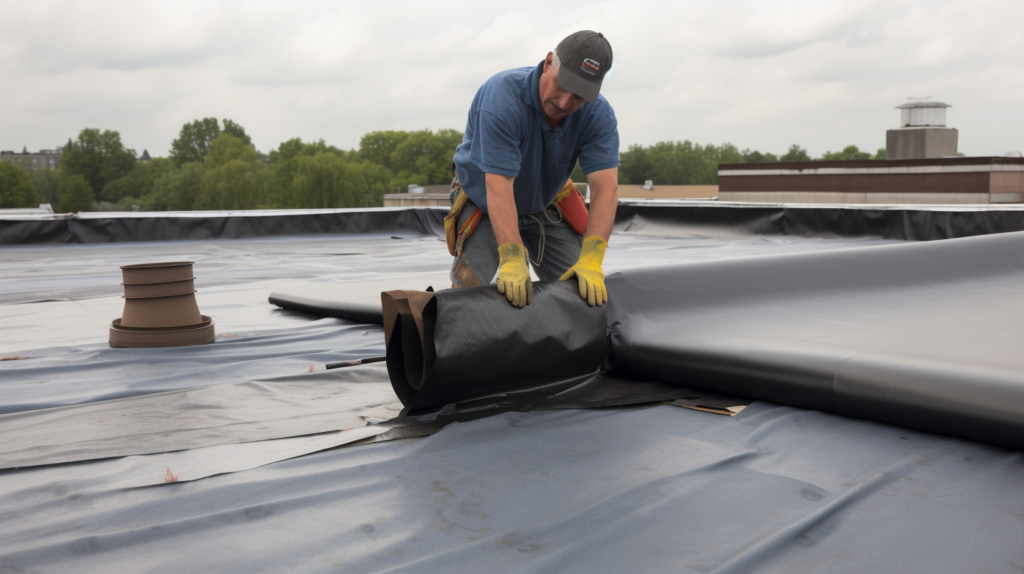
Flat Roof Repair and Replacement Techniques
Flat roofs are more susceptible to leaks, damage, and wear and tear than pitched roofs. Regular maintenance and timely repairs can help prolong the lifespan of your flat roof. However, replacement may be necessary if your flat roof is beyond repair.
In this module, we will discuss some standard repair techniques for flat roofs and best practices for replacement.
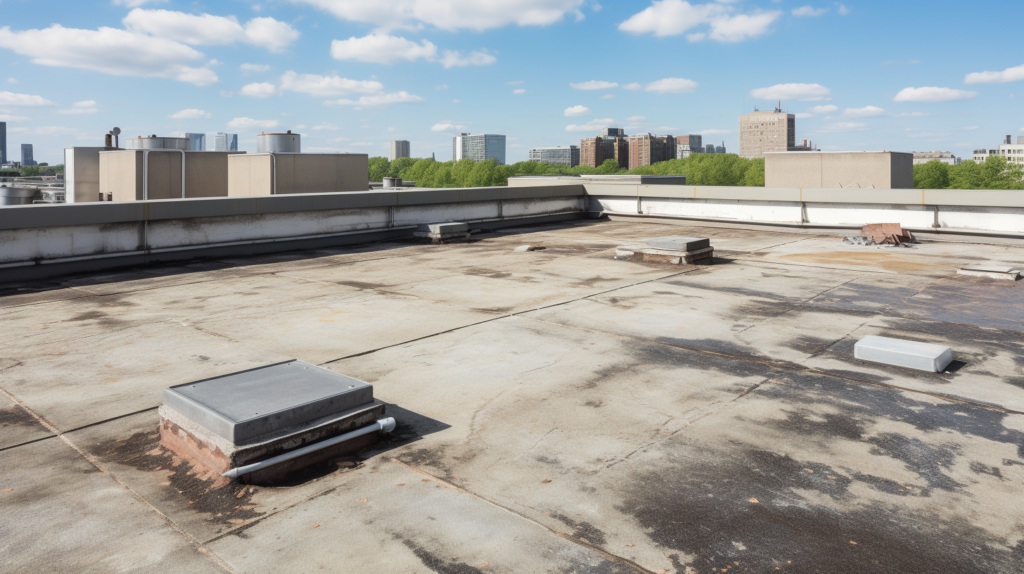
Common Repair Techniques
Patching
Patching is a common repair technique for flat roofs that involves applying a patch over the damaged area. The patch can be made from tar, roofing cement, or a self-adhesive membrane. The patch should be applied to a clean and dry surface to ensure proper adhesion.
Coating
The coating is another repair technique for flat roofs that involves applying a waterproof layer over the entire roof surface. The coating is typically made from a liquid polymer sprayed or rolled onto the roof. The coating can help extend the life of a flat roof by providing an additional layer of protection against weather and UV damage.
Resurfacing
Resurfacing involves adding a new layer of roofing material over the existing roof surface. This technique is often used when the existing roof is still in good condition but needs additional protection. Resurfacing can extend the life of a flat top and improve its performance.
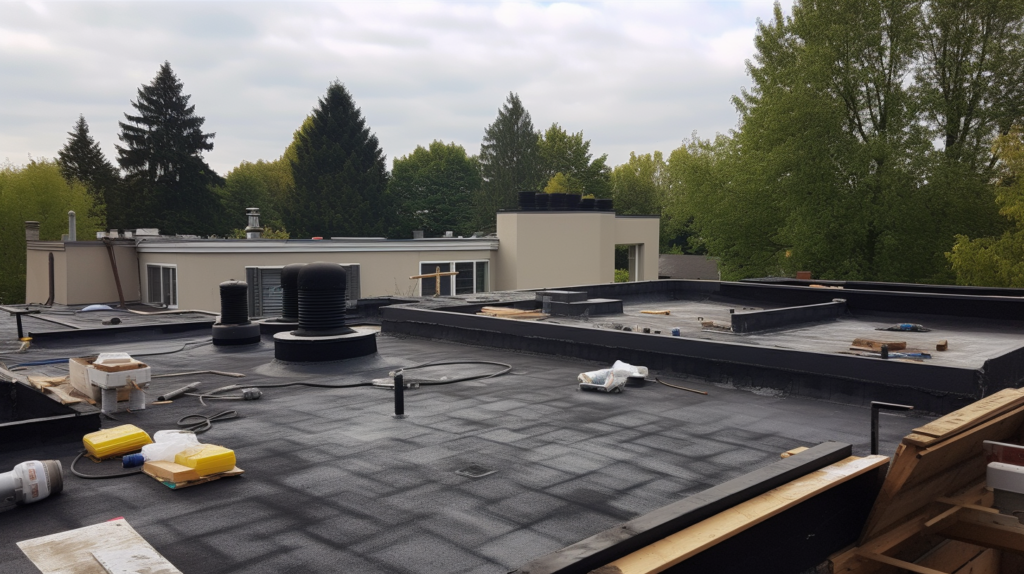
Best Practices for Replacement
If your flat roof is beyond repair, replacement may be necessary. Here are some best practices for flat roof replacement:
Choose the Right Materials
Choosing suitable materials for your flat roof replacement is crucial to its longevity and performance. Factors to consider when selecting fabrics include weather conditions in your area, building codes and regulations, budget, energy efficiency requirements, and maintenance needs.
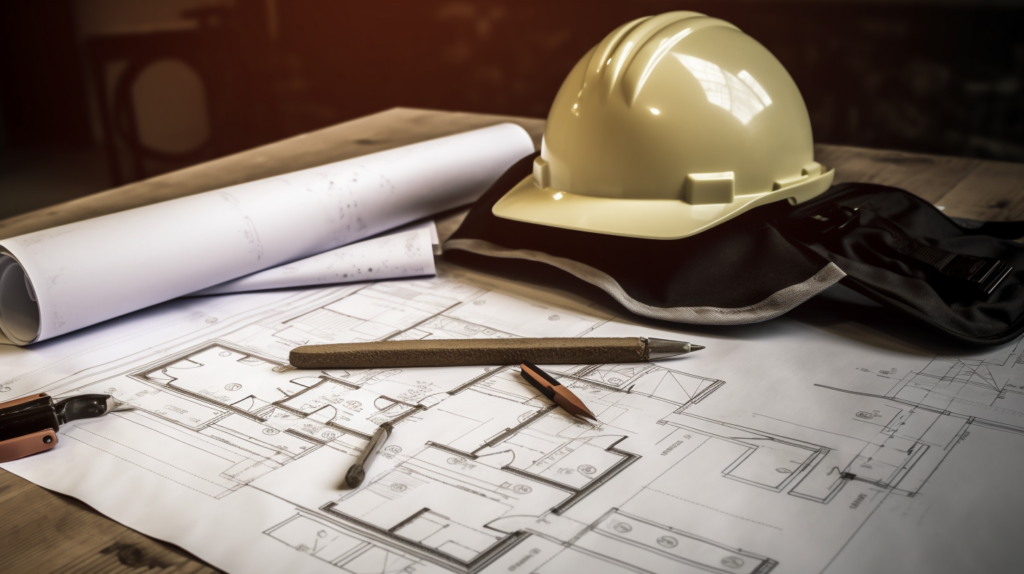
Hire a Professional Contractor
Replacing a flat roof is a complex project that requires expertise and experience. It is essential to hire a professional roofing contractor who can provide expert installation and ensure that the new roof is up to code.
Remove the Existing Roof
Removing the existing roof down to the decking is essential when replacing a flat roof. This allows for a thorough decking inspection and ensures that any damage or decay is repaired before the new roof is installed.
Inspect and Replace Flashing
Flashing is critical to any flat roof system as it prevents water from seeping into the joints and seams. Inspecting all flashing and replacing any damaged or corroded pieces is essential during replacement.
Conclusion – Flat Roof Repair and Replacement Techniques
In conclusion, timely repairs and regular maintenance can help prolong the lifespan of your flat roof. If replacement is necessary, it is crucial to choose suitable materials, hire a professional contractor, and follow best practices for removal and installation to ensure a long-lasting and reliable flat roof.
Flat Roof Installation Best Practices
Flat roofs offer many advantages, including additional outdoor space and cost-effectiveness. However, proper installation is crucial to ensure their longevity and performance. This module will discuss some best practices for flat roof installation.
Prepare the Substrate
The substrate is the surface on which the flat roof will be installed. It should be clean, smooth, and free of debris or sharp objects that could damage the roofing material. The substrate should also have a slight slope to allow for proper drainage.
Choose the Right Materials
Choosing suitable materials for your flat roof is essential to its longevity and performance. Factors to consider when selecting materials include weather conditions in your area, building codes and regulations, budget, energy efficiency requirements, and maintenance needs.
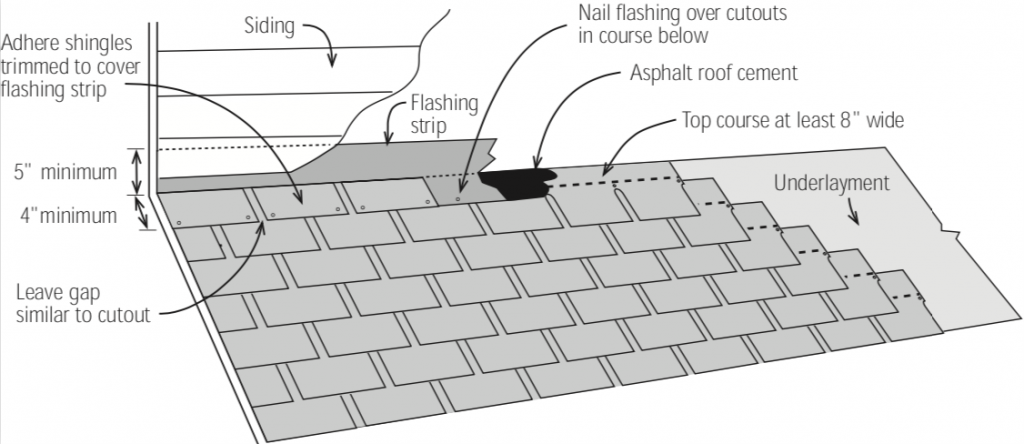
Use Proper Flashing
Flashing is critical to any flat roof system as it prevents water from seeping into the joints and seams. It is essential to use the correct type of flashing for your specific roofing material and to install it properly to ensure a watertight seal.
Install Proper Insulation
Proper insulation is essential for flat roofs to prevent heat loss and reduce energy costs. Insulation should be installed according to local building codes and regulations and appropriate for the climate and intended use of the building.
Ensure Proper Drainage
Proper drainage is essential to prevent ponding and water damage to the roof. The roof should have a slight slope towards the drain or scupper for proper water drainage. Gutters and downspouts should also be properly installed and maintained to avoid clogs.
Hire a Professional Contractor
Flat roof installation is a complex project that requires expertise and experience. Hiring a professional roofing contractor who can provide expert installation and ensure the new roof is up to code is essential.
Conclusion – Flat Roof Installation Best Practices
Proper installation is crucial to ensure the longevity and performance of flat roofs. By following best practices such as preparing the substrate, choosing suitable materials, using proper flashing, installing sound insulation, ensuring adequate drainage, and hiring a professional contractor, you can ensure that your flat roof will provide reliable protection for many years.
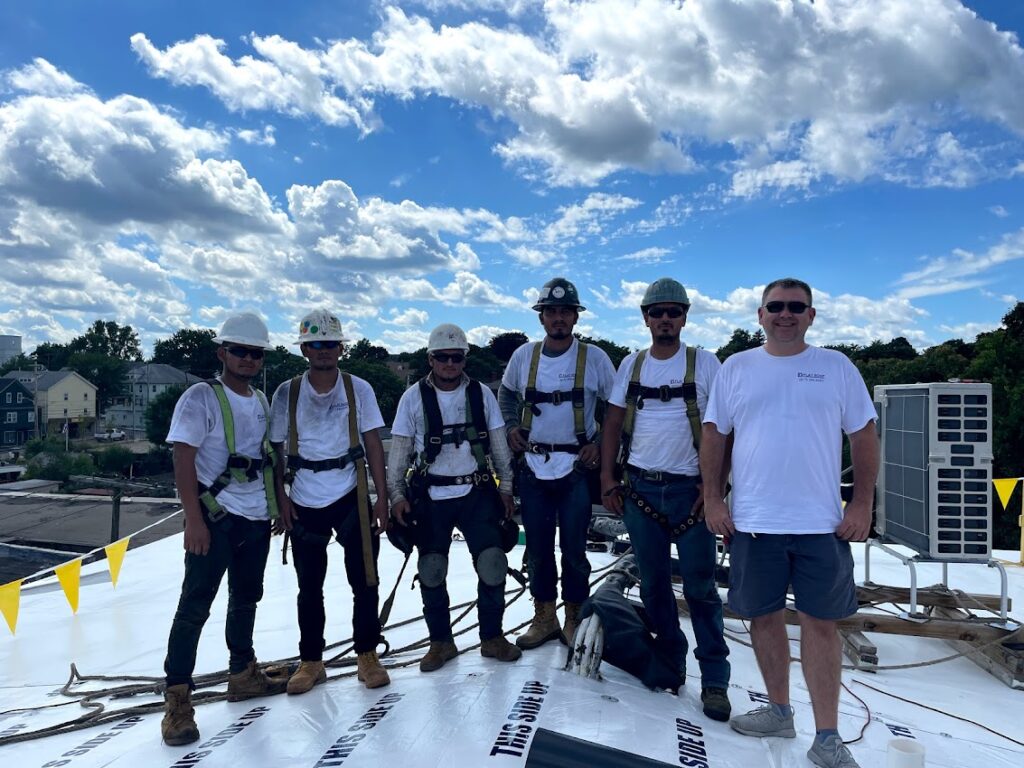
Wrap-up – Let’s review what we have just seen so far
- Flat roofs are an excellent choice for commercial and residential buildings as they provide additional space and cost-effectiveness. Understanding the different types of flat roofs and choosing suitable materials is crucial to ensuring their longevity and performance.
- Timely repairs and regular maintenance can help prolong the lifespan of your flat roof. If replacement is necessary, it is essential to choose suitable materials, hire a professional contractor, and follow best practices for removal and installation to ensure a long-lasting and reliable flat roof.
- Proper installation is crucial to ensure the longevity and performance of flat roofs. By following best practices such as preparing the substrate, choosing suitable materials, using proper flashing, installing sound insulation, ensuring adequate drainage, and hiring a professional contractor, you can ensure that your flat roof will provide reliable protection for many years.



